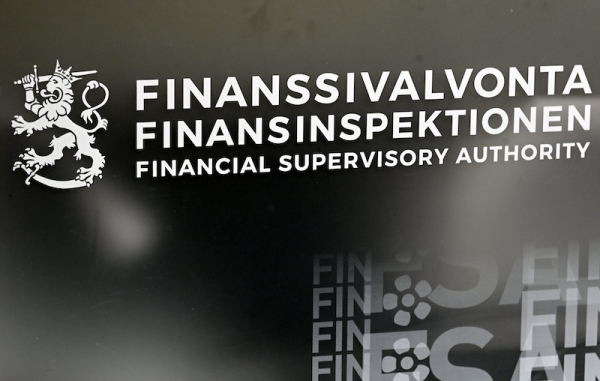
The Financial Supervisory Authority sign photographed during a press conference on the state and risks of the financial sector in Helsinki on September 12, 2024. LEHTIKUVA
- Next Article YLE: Finland to bring arts, music and physical education to matriculation exam
Despite challenging economic conditions, Finland’s financial sector has shown resilience in the first half of 2024, with the banking and insurance sectors maintaining strong capital positions. However, rising geopolitical tensions and sluggish economic growth continue to pose significant risks, keeping the sector on alert for potential future shocks.
The Finnish Financial Supervisory Authority (FIN-FSA) highlighted these concerns in its latest report, noting that while there are early signs of economic recovery, risks related to global conflicts,
such as Russia’s war in Ukraine and unrest in the Middle East, continue to loom large. These geopolitical factors could drive up prices and disrupt trade, further complicating the financial landscape.
Finland’s banking sector remains in good health, with strong capital buffers and stable liquidity. The sector’s Common Equity Tier 1 (CET1) capital ratio increased to 19.1% by the end of June, compared to 18.3% in December 2023. Despite these strengths, there has been a slight uptick in non-performing loans, particularly in consumer credit and sectors hit hard by rising interest rates, such as construction and retail.
“Finland’s banking sector has weathered turbulent years well, thanks to its strong capital position and high-quality risk management. However, the broader operating environment is still marked by uncertainty, especially due to geopolitical risks,” said Tero Kurenmaa, Director General of FIN-FSA.
The employee pension sector saw an improvement in its solvency ratio, which rose to 128.5% by mid-year, up from 126.3% at the end of 2023. This was largely driven by strong returns on equity investments, though real estate investments continued to underperform.
In the life insurance sector, solvency remained stable at 233.8%, with positive investment returns, primarily from equities. Unit-linked assets, where customers bear the investment risk, grew by 7.2% compared to the end of 2023.
The non-life insurance sector, however, experienced a slight dip in solvency, with its ratio falling to 247.1% from 265.5% in December. This was due to rising claims, particularly in health insurance and weather-related damages, and increased capital requirements linked to equity investments.
While early signs of economic improvement are evident, ongoing geopolitical tensions and global instability present significant risks for Finland’s financial sector. With inflation slowing and loan reference rates stabilizing, there is cautious optimism, but the sector remains vigilant to potential disruptions.
“The Finnish financial sector is well-prepared, but continued geopolitical risks could still weaken the operating environment,” Kurenmaa emphasized.
As Finland’s economy slowly turns a corner, the financial sector will need to remain adaptable to navigate the uncertainties ahead, balancing resilience with the need for vigilance in a volatile global landscape.
HT
- Next Article YLE: Finland to bring arts, music and physical education to matriculation exam
Source: www.helsinkitimes.fi
